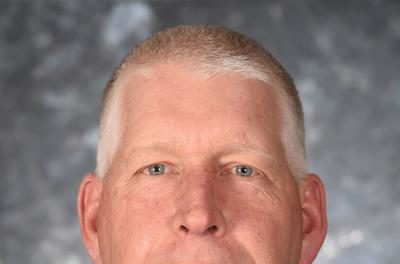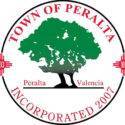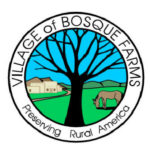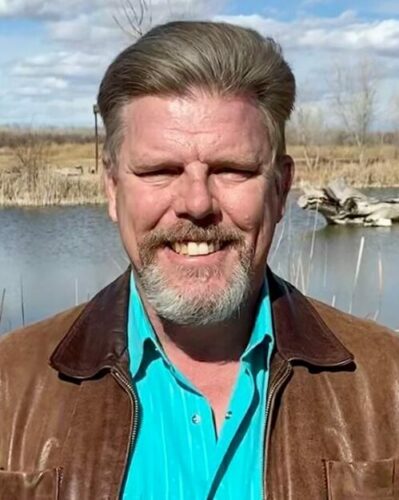
Andrew Hautzinger
Good readers:
Today we embark on a journey concerning the dirt below our feet, peering into the soil, appreciating the tiny soil bugs as they build their essential-for-plants soil microbial communities, while gaining insight into “What is healthy soil?”
We also will turn our gaze to work afoot in our community, across the state, and throughout our nation that is fostering healthy soils, including a fun local community gardening event happening on Saturday, Feb. 26.
A microscopic view into healthy soils reveals a living ecosystem in which dead organic matter forms the base of a food web consisting of microscopic and larger organisms — all hard at work. Together, these organisms sustain other biological activities that promote plant, animal and human health.
In the natural environment, plants form relationships with soil microbes to obtain nutrients, water and protection against pathogens. In return, plants provide the microbes — and us — with food. This is the wonder of healthy soils.
Viewed in relation to a farmer’s field, soil science and farmer experience provide lessons that we can use to make our own soils more healthy. This guidance can be summarized in the five soil health principles.
- Keeping soil covered;
- Minimizing soil disturbance on cropland and minimizing external inputs;
- Maximizing biodiversity;
- Maintaining a living root;
- Integrating animals into land management, including grazing animals, birds, beneficial insects or keystone species, such as earthworms.
As we gaze across farm fields in our state and country, we see encouraging movements that are fostering sustainable agriculture and healthy soils. One is the emerging regenerative agriculture movement, which is simply the management of farms by using multiple on-farm species of plants and animals, like our ancestors did (visit Facebook or YouTube for the story of Sublime Pastures, a regenerative farm in Tomé).
What’s more, regenerative farming is a holistic way of managing farms and growing foods, customized to meet local conditions by applying many of the same healthy soil principles listed above, especially the promotion of biodiversity and integration of animals into land management.
Because regenerative agriculture cultivates beneficial soil microbes that have mutually-beneficial relationships with plants, it can increase crop yields, reduce water use, and help address climate change through the near miraculous sequestration of carbon in the soil. This movement is already improving food quality, protecting the livelihoods of farmers and empowering stewardship of the land upon which we all depend.
With our gaze still focused on farms across the state and nation, we note a new soil collaboration — the Soil Health Champions Network.
This nationwide movement is led by the National Association of Conservation Districts (NACD) to connect farmers, ranchers and backyard conservationists, who practice good soil health management on their lands and promote soil health in their communities.
New Mexico has more soil health champions than any other state — our Valencia Soil and Water Conservation District is one of our state’s leaders, with over 20 local soil health champs! Visit the NACD website or contact me if you have questions.
Another essential part of the recent healthy soil story in New Mexico is the Healthy Soil Act, passed by our Legislature in 2019. This act authorized the New Mexico Department of Agriculture (NMDA) to establish the Healthy Soil Program, which includes financial assistance to help citizens implement conservation projects that focus on one or more of the five healthy soil principles.
In some big news, NMDA will be accepting program applications for this year from mid-March until mid-May. See NMDA’s Healthy Soil Program website for details. Please contact VSWCD if you have a possible project in mind, and we can help you build a proposal.
Finally, as we settle our gaze on the local community in which we are so fortunate to live, I invite you, dear readers, to a community gardening event that will demonstrate the power, nay, the magic of using mulch to improve your soil.
On Saturday, Feb. 26, please join us at our district’s two community gardens for the Magical Mulching Demonstration Event, which starts at 10 a.m. at the El Cerro Mission Community Center.
At noon, we’ll move to the Meadow Lake Community Center, where a free lunch will be provided by the Tomé Todo Food Truck, generously underwritten by the Seeding Regenerative Agriculture project.
Please come enjoy a meal while learning about mulching, healthy soils, and community gardening. See valenciaswcd.org for more details.
(Andrew Hautzinger is the district director of the Valencia Soil and Water Conservation District.)
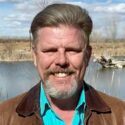
Andrew Hautzinger, guest columnist
Andrew Hautzinger has been the district director for the Valencia Soil and Water Conservation District since 2020. Prior to that, he was a volunteer VSWCD board member for 12 years and spent many years volunteering at the Whitfield Wildlife Conservation Area.
Hautzinger has a bachelor of science in watershed sciences from Colorado State University. He worked for more than 27 years as a federal hydrologist working for agencies within the Department of Interior including the U.S. Bureau of Land Management, U.S. National Park Service, and for the final 20 years of his career, with the U.S. Fish and Wildlife Services’ National Wildlife Refuge System.



